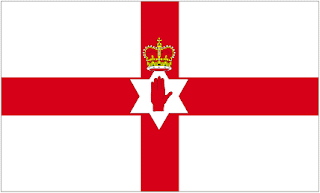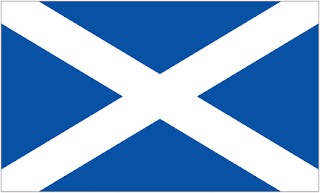The Union Jack
Northern Ireland is struggling with its past and future. Britain subjugated Ireland, and during the time of Cromwell, massive immigration to Ireland was encouraged. This led to many Scots leaving Scotland, and settling in the north of the island. They where predominantly Protestant, whilst the Irish where Catholic.
Once Ireland gained its independence in 1921, there was the thorny issue of the Ulster provinces. Ireland was to become a Roman Catholic nation, whilst the northern counties where protestant, and held strong ties to the rest of the UK. This led to the partitioning of Ireland.
Most of Ireland gained its independence, whilst the northern counties remained part of the UK.
However, with a strong Catholic community in the North, trouble broke out with the Catholics feeling disenfranchised by the process, as well as wanting to unite with the rest of Ireland. On the other side, the Unionist Protestant community. They did (and do) not want unity with Ireland, as it would lead to many laws having to change. Such as abortion.
So, both sides of the community have fought over many issues, including which flag represents them. The original flag of the St Patricks cross really is not in use any more, but did originate from a powerful family from the north if Ireland hundreds of years ago. This cross, whilst not being seen as representative of Ireland, is seen as being politically neutral. So has been used in in public before now.
It also features as part of the emblem that makes up the new Police Service of Northern Ireland.
Officially, the only flag that can be used is the Union Jack, the flag of the UK. Whilst the other home nations can use their own flags on certain days, Northern Ireland does not enjoy that privilege due to the conflicts between the communities.
The Unionist communities regularly use the Union Jack, as well as the Ulster banner. This is the Cross of St George, defaced in the centre with a 6 point star topped with a crown. On the star is the red hand of Ulster. This was used by the government of Northern Ireland from the 50's to the 60's, when its use was discontinued. this flag is currently not accepted by the Republican community.
However, it is in use by Northern Ireland in some sporting evens where Northern Ireland competes as a separate entity. Such as the Commonwealth Games.
The Unionist community also uses the St Andrews Saltire of Scotland. This is to show the strong historic links with Scotland that the majority of the people in Northern Ireland have.
The powerful Orange Order in Northern Ireland are strongly Unionist, and use an orange banner as their flag.
It is defaced with the Cross of St George in the upper hoist canton, and a purple five point star on the fly.
The Republican community currently use the Irish tricolour of green, white and red. They see this as representative of the whole of Ireland, and representative of the 2 communities. Green for the Republicans, Orange for the Unionists, and white for the peace between them.
Its use is somewhat controversial. It is flown by the Republicans on St Patricks Day, to much protestations from the Unionist communities, who state that it is representative of the Republic, not the whole island of Ireland.
However, the Republicans do believe the flag is representative of the whole island (the colours), and also argue that they should be allowed to use it on St Patricks Day, as the Unionists fly the Ulster Banner on the 12th of July. The issue here is that whilst the 12th of July is overtly Unionist, St Patricks Day is supposed to be non-political.
There have been attempts to create a flag representative of Northern Ireland. The first attempt in the 90's took the Ulster banner, removed the crown, and placed the cross on a yellow field. Inspired by the Ulster Province flag, which has seen some use by the Republican community.
This did not generate an enthusiastic response from the public. Most liked its inclusiveness, but many already felt that they had a flag. Either the Union Jack, or the Irish Tricolour.
In 1998, the Flag Institute created a new design. Taking the Ulster banner, and taking off the crown and star for being Loyalist. It now placed the hand in a red circle. They kept the white fimbriation round the red cross to imitate the Union Jack, highlighting the Unionist links. Also, it prevented the yellow from the Ulster Province flag from being too dominant. Again, it did not generate a lot of impact, but helped to add to the debate.
In 2003, the Alliance Party of Northern Ireland created a non-political flag that could represent Northern Ireland. this was similar to the current flag of Kosovo, or the unity flag of Korea. Taking the map of Ulster, and placing it on a blue field.
A third option that is limited in popularity, is the Independence movement of Northern Ireland. Arguing that the North has had more links with Scotland that Ireland, they feel that the potential best option is not unity with the UK since the large Republican community does not want that. Also, the Unionist community would never sanction unity with Ireland.
Therefore, they argue, Northern Ireland should go its own way.
Their proposed flag took the old St Patricks Cross, and merged it with the Scottish flag, and placed the Ulster hand in a yellow 6 point star in the flags centre.
Anyway, here is hoping that one day the people of Northern Ireland will find a flag that represents the whole community! Maybe this?
Or even this? Who knows!















an interesting post. I have worked a little at creating a new Northern Ireland flag and have some examples on my blog
ReplyDeleteReally do like the final example with or without the causeway stone hexagon and red hand. The 90s and Flag Institute designs are pretty sweet too.
ReplyDelete